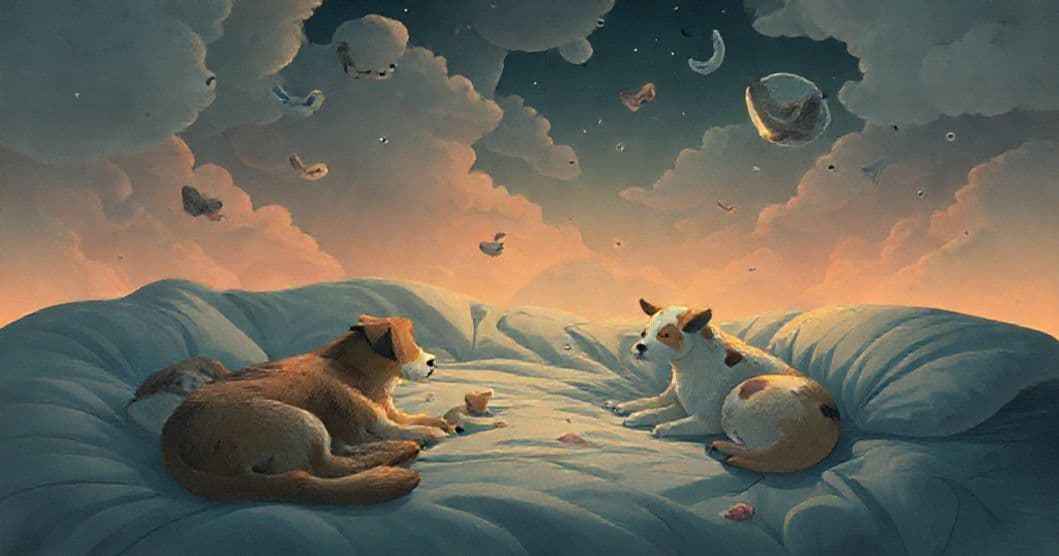Part 1: Dream Presentation
Dreams often serve as mirrors reflecting our inner emotional landscapes, and recurring dreams can act as persistent messengers from the unconscious mind. Consider this vivid recurring dream pattern that has taken root in the dreamer’s monthly experience: a journey back to an old apartment filled with neglected pets, where the paradox of survival despite carelessness evokes profound sadness upon waking.
In this recurring dream, the dreamer finds themselves transported to an old apartment they once occupied, a space that feels both familiar and disorienting. The rooms are filled with dozens of aquarium tanks—some large, some small—each containing an array of creatures: sleek fish darting through water, coiled reptiles resting on branches, slithering snakes, and plump frogs clinging to rocks. The tanks themselves, though, tell a different story: the water is murky in places, the filters silent, and the dreamer notices with mounting dread that they’ve neglected these animals for months. Yet, despite this failure to feed them, the creatures remain alive—fish swimming weakly but persistently, reptiles still breathing, frogs croaking faintly. The paradox of their survival despite such neglect fills the dreamer with a heavy sadness. More recently, the dream has evolved into a variation: now, instead of aquatic life, the dreamer finds themselves in another part of the same apartment, surrounded by bird cages. These cages are visibly dirty, their bars streaked with grime and droppings. Inside, birds of various kinds huddle in corners, their feathers dull and matted. There’s no food in their bowls, no fresh water to be seen, yet these birds, too, continue to exist. Their silent presence, their unexpected vitality in the face of such neglect, leaves the dreamer with an overwhelming sense of sorrow that lingers even after waking.
Part 2: Clinical Analysis
Want a More Personalized Interpretation?
Get your own AI-powered dream analysis tailored specifically to your dream
🔮Try Dream Analysis FreeSymbolic Landscape: Unpacking the Dream’s Visual Language
The recurring dream is rich with symbolic imagery that demands careful unpacking. The old apartment serves as a powerful setting, representing the dreamer’s past self or a time of life where different responsibilities and emotional states existed. This familiar yet nostalgic environment suggests a connection to unresolved experiences or feelings from the past that continue to resonate in the present. The aquarium tanks and bird cages function as containers for the dreamer’s inner world—each creature representing different aspects of their psyche that require attention.
Aquatic animals in neglected tanks symbolize emotional states that feel fluid and deep, yet disconnected from nourishment. The dreamer’s failure to feed these creatures for months mirrors a pattern of neglect in waking life—perhaps areas of self-care, emotional needs, or responsibilities that have been overlooked. The fact that these animals remain alive despite the dreamer’s neglect introduces a layer of resilience and unexpected vitality, suggesting that even when we neglect certain parts of ourselves, they persistently demand attention.
The transition to birds in dirty cages introduces another dimension: birds often symbolize freedom, communication, and spiritual aspects of the self. The dirty cages represent both literal and metaphorical confinement—areas of life where the dreamer feels trapped or restricted. The absence of food and water in these cages, combined with the birds’ continued existence, amplifies the theme of survival against neglect, suggesting that the dreamer’s inner resources or sense of self continue to persevere despite external neglect.
Psychological Undercurrents: Theoretical Perspectives
From a Jungian perspective, these recurring dreams may reflect the shadow self—the neglected aspects of the psyche that persistently demand integration. The aquarium tanks and bird cages could represent the dreamer’s
